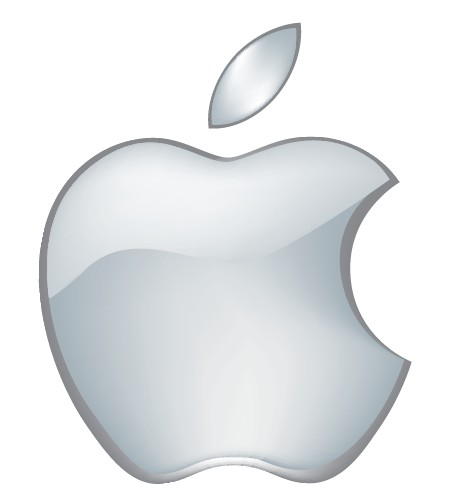One of the running jokes in car circles for some time has been conjecture about the idea of an Apple car. Mostly it's a latter-day parlor game involving guesses about which stereotypical Apple traits would make their way onto four wheels and how the end result would function in the world of less insanely great Toyotas and BMWs and Chevy pickups. (Yes, I've indulged in this myself.)
Eventually the exercise falls apart when everyone begrudgingly accepts that Apple is as likely to build a car as it is to start making technical mountain climbing gear. It's not their game, it has little connection to their core strengths, it makes no real sense in the modern market.
Of course, none of this has anything to do with Apple's very clear desire to be in vehicles. CarPlay, the on-dash iPhone extension, is undergoing a slow and cautious rollout, but the idea is definitely sound. And, more importantly, it's scalable.
I'm starting to think that CarPlay is just the welcome screen of something very interesting that Apple plans to introduce soon.
There's an intriguing article in Business Insider tonight alleging that a mysterious Apple vehicular development program has been busy poaching Tesla employees - engineers, mostly, with some specific skillsets, including manufacturing and robotics. The anonymous source still clearly exists in the reality-distortion field, claiming that the project will "change the landscape and give Tesla a run for its money."
This comes on the heels of reports of an Apple-owned Chrysler minivan fitted with an array of cameras roaming Bay Area (and Brooklyn) neighborhoods. The simplistic first guess as to this thing's intention is that it's Apple's response to Google's familiar Street View fleet; on second thought, it could be a self-driving project. The camera positioning favors the second interpretation. No one is certain, though, and Apple is as characteristically tight-lipped about the project as ever.
Two Tesla-specific deductions come quickly to mind: First, one of the big features touted on the P85D is the inclusion of a rather highly evolved autopilot function.
 |
| Photo: Tesla |
The deeper consideration is for the plight of modern product planners and vehicle-interior designers and electrical and computer engineers at any car company - and, by extension, the car companies themselves. They must face the very difficult task of presenting an ever-increasing number of features and functions in a rational usable form. They have to combine and connect sound systems, navigation systems, security systems, telecommunications systems from phones to OnStar-style services, maybe chassis and driveline dynamic-control systems, and do it all with an interface that is usable and responsive. They also have to include such modern gotta-have-its as keyless entry and keyless start.
Setting up any modern car to include even some of these functions is enormously complicated, time-consuming, and expensive. Parts and systems come from any number of suppliers and must be made to work together harmoniously. Many components can be shared across a manufacturer's lineup, but others are probably model-specific. And no one has really done a truly great job with it all yet. (iDrive, anyone? Sync?) We won't even talk about how quickly some of these systems age. Tesla's system is likely the best, because they more or less cribbed the idea - big glass panel, ability to download updates and improvements - from the masters.
No one does interface better than Apple. And, arguably, no one surpasses Cupertino's ability to combine a broad multitude of sophisticated features in one easy-to-use arrangement.
What I've got on the mind is pure speculation at this point, but still:
I think Apple's working on a full in-car electronics suite, something that unifies connectivity and entertainment and navigation and probably some degree of self-driving ability and a lot of other features, in one coherent and networked package that can be offered as a finished off-the-shelf product to vehicle manufacturers.
That BI article very briefly mentions the potential for something this ambitious towards the end ("a much deeper set of integrated experiences"), but I think we can see the possibilities here.
It will use a standardized iPad-like controller - like CarPlay, like Tesla - to manage basically everything that requires operator input and computer modulation. It will be a component-based arrangement - want autopilot? No problem! Click on the option box and the factory will plug in another standardized bank of sensors. It will be capable of receiving over-the-air updates and upgrades, so the systems won't quickly become obsolete. And it will work very well.
Those Tesla engineers that defected to Apple? The manufacturing folks will help figure out how to make all of this into an affordable and installable package. The robotics heads are working on the autopilot system and how it can be adapted from vehicle to vehicle.
This vendor-supplied complete solution is, of course, more or less unheard of in the car and truck world where manufacturers either do all the work in-house or with a few choice suppliers, or at most go in for limited marque-specific partnerships (Ford and Microsoft, for example). However, it is common practice in aerospace, where an aircraft manufacturer purchases a complete aviation-electronics - avionics - package (radios, navigation, displays, autopilots, other necessities) from an outside supplier like Honeywell or Garmin and installs it in the airplane. This is what I am guessing Apple wants to provide to vehicle manufacturers.
 |
| The flight deck of the Cessna Citation M2 bizjet, with Garmin avionics and touchscreen displays. Photo: Cessna |
Apple doesn't need to build the whole car. It can just build the parts of the car which it can do better than anyone else.
I wonder if Tesla will be interested.


No comments:
Post a Comment
What are you thinking?